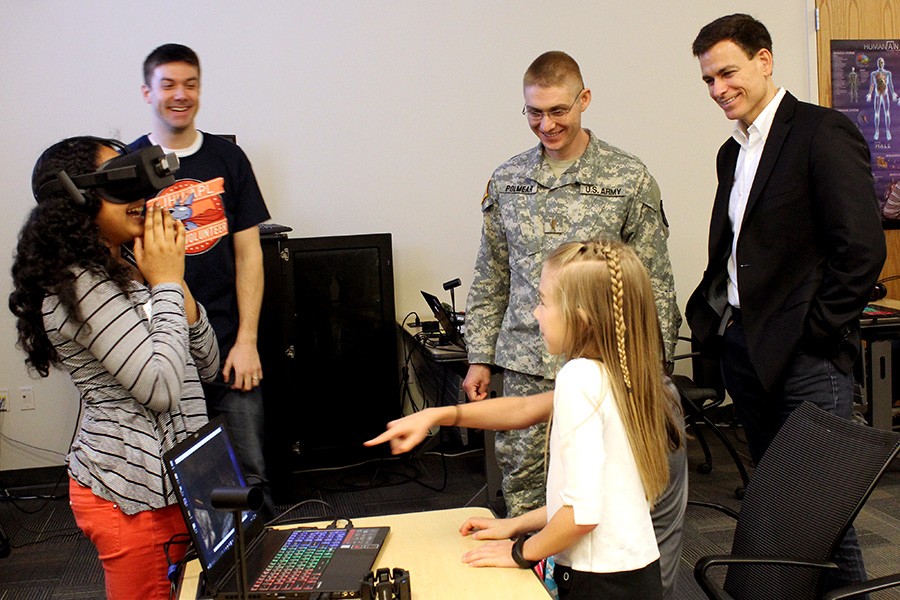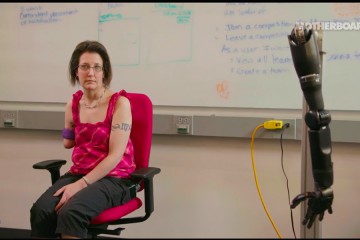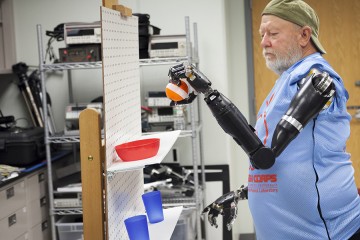The Johns Hopkins Applied Physics Laboratory in Laurel, Maryland, is using a $375,000 grant from the Office of Naval Research to educate the children of servicemen and women about prosthetics using virtual reality.
In a workshop beginning June 3 at Walter Reed National Military Medical Center, APL's science, technology, engineering and math program office will partner with the ONR to encourage the children to develop their interest in STEM fields while enabling them to learn more about the prosthetics that help members of the military service community.
Video credit: Johns Hopkins Applied Physics Laboratory
The Connecting STEM Outreach Now Using VIE Education for Youth program, or CONVEY, was piloted in April and will use a modified version of a virtual training platform APL developed to help amputees adapt quickly to operating its revolutionary Modular Prosthetic Limb. CONVEY is focused on interactive learning and teaches children about topics from biology to engineering.
"Our objective is to use the virtual training platform to enhance each child's understanding of how STEM concepts and products are being used to enable personal independence, mobility, and human interaction for their loved ones," said Dwight Carr, APL's STEM program manager. "It's an engaging and interactive way to expand the use of the technology, while helping both the service members and their families."
APL subject-matter experts in prosthetics and the virtual training platform worked with APL STEM office staff members to develop hands-on demonstrations for students and design multiday workshops and follow-on activities.
APL's Modular Prosthetic Limb was developed as part of the Revolutionizing Prosthetics program—an ambitious multiyear program funded by the Defense Advanced Research Projects Agency to create a neurally controlled artificial limb that restores near-natural motor and sensory capability to upper-extremity amputee patients. APL leads an interdisciplinary team consisting of other Johns Hopkins institutions, government agencies, universities and private firms to implement DARPA's vision of providing the most advanced upper-extremity prosthesis.

Image credit: JHU Applied Physics Laboratory
APL's STEM outreach efforts date back to 1976. Today, its educational initiatives reach about 3,500 students and community residents annually through programs like Girl Power, STEM Academy, the Maryland Mathematics, Engineering, Science Achievement program, NASA education outreach programs, the ASPIRE high school mentoring program, and APL's College Prep Program.
The Johns Hopkins Applied Physics Laboratory is the nation's largest university affiliated research center—an independent nonprofit organization that conducts essential research, development, and systems engineering for the nation. For 75 years, the Laboratory's engineers and scientists have served as trusted advisors and technical experts to the government. APL also maintains independent research and development programs that pioneer and explore emerging technologies and concepts to address future national priorities.
Posted in Science+Technology
Tagged applied physics laboratory, prosthetics, apl, military











